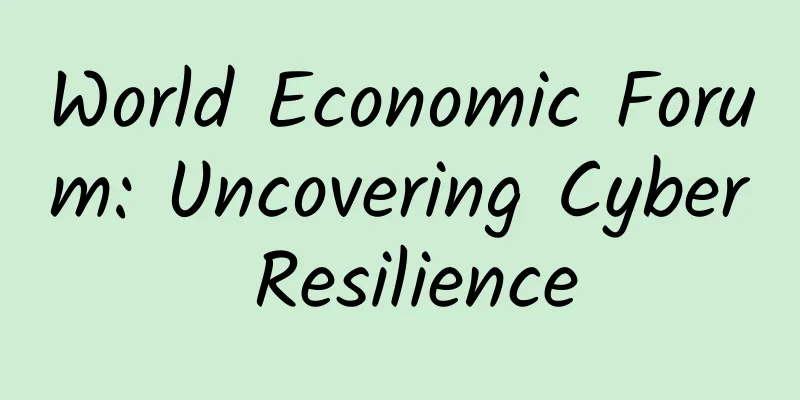World Economic Forum: Uncovering Cyber Resilience

|
Since the beginning of 2020, the World Economic Forum’s Global Risks Report has highlighted cyber risk as one of the top priorities for organizations, and the threat continues to grow. The challenge is dynamic. The evolution of the digital environment and infrastructure, driven by disrupted connectivity and emerging technologies, has greatly complicated the threat landscape and the cyber risks organizations face. Recognizing that individuals and organizations cannot prevent all malicious attacks or cyber failures, while embracing the opportunities presented by digitalization, has led to an increase in cyber resilience. Digital transformation continues to reshape and evolve businesses and governments. An organization’s primary goals are often supported by business processes that rely heavily on digital technologies, often without any analog alternatives. While primary goals and objectives vary between organizations, they always include protecting critical service delivery, stakeholder confidence, and key assets that underpin value and market position. Achieving true cyber resilience is fundamentally a leadership issue and is critical to preserving shareholder value. The report is the result of a collaboration between the World Economic Forum, the Oxford University’s Global Cybersecurity Competence Centre and a working group of industry cyber leaders. They came together to analyse cyber resilience and provide a broader strategic definition that considers a range of risk scenarios that are critical to an organisation’s key objectives. These risks include supply chain disruptions, attacks on trust and reputation, and legal liabilities from data breaches. Organizations must be prepared for major cyber incidents. Continuous investment in cyber resilience capabilities enables organizations to maintain their primary objective in the face of cyber attacks and other cyber incidents, ensuring their growth potential is not compromised. This requires ensuring the ability to resume operations, mitigate the impact on internal and external stakeholders, restore financial and trading performance, protect tangible and intangible assets, and unlock new growth potential. Enterprises need to develop adaptable strategies and share insights with industry peers to cope with complex network environments. Proactive collaboration and continuous learning will play a vital role in providing network resilience.
|
<<: The 10nm Qualcomm Snapdragon 835 is here. Are 821/820 phones still worth buying?
>>: Xiaohongshu is in a dilemma, and Mao Wenchao doesn't have much time left
Recommend
Disaster prevention and reduction science comic book "Spring Festival Special - Kitchen Safety"
It's the Spring Festival again, and it's ...
APP promotion operation: Internet promotion traffic circulation system
Operations are divided into two parts: the first ...
Price reduction! Gasoline and diesel prices will see the largest reduction this year
Recently, the market is pessimistic about the imp...
For every extra protein you eat, your risk of high blood pressure drops by 26%! But the key is to eat like this…
This article was reviewed by Pa Li Ze, chief phys...
This "treasure" on the grassland really looks like the "Bull Demon King"!
On the roof of the world, the Qinghai-Tibet Plate...
Coca-Cola's new slogan: How to kill the self-discipline villain
Some time ago, Coca-Cola changed its new slogan: ...
What is sandstorm weather? How to protect yourself from sandstorms? Learn more in one article →
Spring is the peak season for sandstorms. What is...
Can you learn without a brain? The debate over the boundaries of single-cell learning
Learning, as a psychological and cognitive concep...
How to increase and retain APP users?
How can APP do a good job in user operation? Can ...
Is it no longer popular to promote products through internet celebrities? Brand self-broadcasting becomes a new trend
Currently, brand self-broadcasting has become a n...
Android 8.0, the savior of domestic mobile phones, is coming soon, and its fluency is comparable to that of Apple iOS
Android and Apple have been fighting for so many ...
How much does it cost to customize the Shihezi points mini program? What is the price quote for customizing Shihezi points app?
The factors affecting the quotation of Shihezi po...
New Oriental subway advertisement copywriting failed: Can children’s words be free?
Yu Minhong’s New Oriental has recently gotten int...
"Dou Ke Chuang Zao Ying" topic structure content packaging, write good lessons, record good lessons, and sell good lessons
Training course video lecture content introductio...
Facebook pays tribute to Steve Jobs on his 60th birthday
I don't want to go to work because I'm la...









